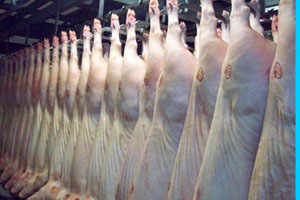Lower boar taint traits in Rattlerow genotypes

A project investigating the heritability of boar taint has discovered that Rattlerow genotypes are far less likely to be affected by this characteristic compared to other lines.
Previous research, carried out at Wageningen University in association with a Netherlands-based breeding organisation, had found that 8% of fat samples taken from boars during its investigations were considered to be affected by boar taint, according to the Human Nose Scoring regime (HNS). However, more recent research, carried out at Leuven University and the Institute of Animal Husbandry in Belgium, using the same analysis of fat samples and HNS evaluation, has found that only 3.9% of Rattlerow genotypes tested positive for taint.
The samples were taken from more than 800 Rattlerow Seghers dam and sire line boars of a weight range 110 to 115kg live weight.
In another study, focused specifically on MaxiMus-sired progeny, researchers found that only 2% of slaughter pigs sired by this high lean meat yielding, fast growing, Piétrain-based terminal sire were affected by boar taint. This was lower than that seen in other finished pigs of a similar genetic make up.
What this research appears to show is that the presence of Skatol and androstenone – the male sex hormones responsible for boar taint – appears to be far less of a problem in MaxiMus carcases compared with that of progeny sired by other similar commercial terminal boars.
Selection viability
Boar taint is a polygenic characteristic – a trait influenced by a variety of genetic markers. Each individual gene may only have a minor influence on the trait itself. However, collectively the genetic mix can produce a very strong physical effect. The challenge for geneticists is to identify which markers within this combination influence boar taint the most and then evaluate if it is worth selecting against them.
Gentec, Rattlerow’s molecular research company, is currently involved in a number of investigations on boar taint. It hopes to develop techniques that will enable Rattlerow to exclude boars that have a high potential for the trait from its breeding programme. The objective is to achieve less than 1% of carcasses with taint.
But for now, based on current data and other research results, the company is confident that even without specific selection against boar taint, MaxiMus sires will produce high meat percentage carcasses with a low risk of boar taint .
“These results show that although MaxiMus progeny have strong male traits for fast efficient growth and high lean meat production, the presence of boar taint in carcases appears to be significantly lower than average. Entire boars do not seem to express a strong tendency to produce high levels of the male sex hormones responsible for causing tainted meat. This is good news for retailers and our customers, and in particular those in the EU that may be concerned about finishing entire males above 100kg liveweight once castration is phased out,” Gentec adds.
These studies are just part of on-going research into the complexities of boar taint; the relationship it may have with other valuable genetic traits and to establish if genetic selection against this trait offers a viable alternative to castration.







